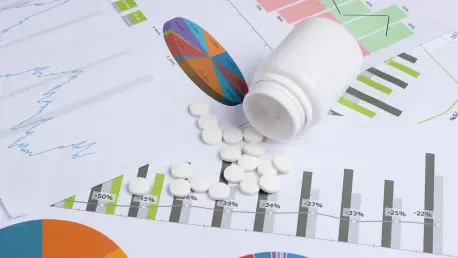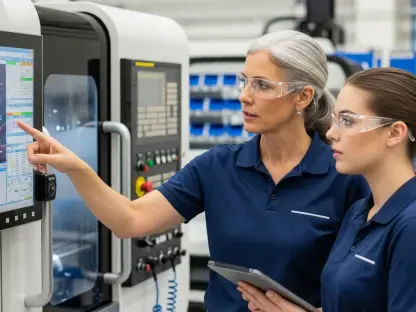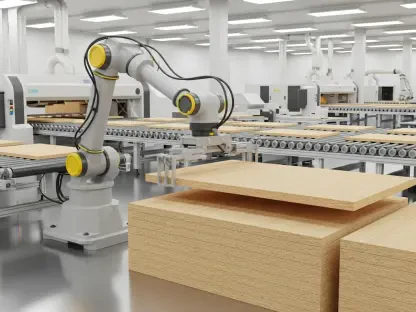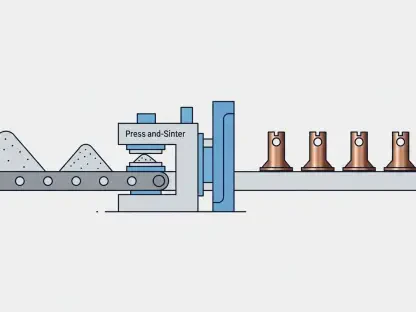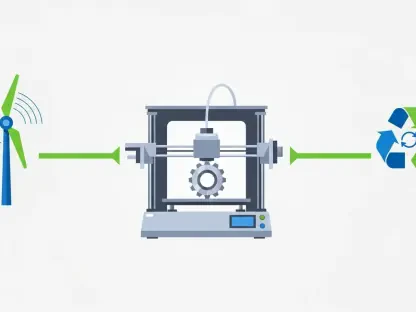In this insightful discourse, we have the privilege of speaking with Kwame Zaire, a renowned expert in manufacturing with a keen focus on the electronics and equipment industry. Kwame brings a wealth of knowledge on production management, predictive maintenance, quality, and safety. Today, we delve into the significant economic topic surrounding President Trump’s proposed tariffs on imported pharmaceuticals and its implications for the pharmaceutical industry and U.S. manufacturing.
Can you explain the rationale behind President Trump’s proposal to impose a 200% tariff on imported pharmaceuticals?
The central idea behind President Trump’s proposal is to encourage pharmaceutical companies to increase their manufacturing within the United States. By imposing such a high tariff on imported drugs, the administration aims to reduce dependency on foreign pharmaceutical products, which they argue is essential for national security and economic stability.
What specific goals is the Trump administration aiming to achieve with such a high tariff rate?
The administration’s goals include reshoring manufacturing jobs, ensuring a stable supply chain for essential medicines, and bolstering national security by having more pharmaceuticals produced domestically. They believe that by creating financial disincentives for importing, companies will be more inclined to invest in U.S.-based production facilities.
How does the grace period of one to one and a half years for pharma companies to reshore their manufacturing align with these goals?
The grace period provides pharmaceutical companies with the necessary time to plan and adjust their operations without immediate financial repercussions. This timeframe allows businesses to develop strategic plans for moving facilities, hiring local talent, and complying with U.S. regulations, ideally leading to a smoother transition that aligns with the administration’s long-term goals.
What steps is the Department of Commerce taking in their investigation of pharmaceutical imports under Section 232 of the Trade Expansion Act?
The Department of Commerce is investigating whether the reliance on imported pharmaceuticals presents a threat to national security. This involves assessing the domestic capacity for producing these drugs and ingredients and determining whether increased tariffs are justified to foster domestic manufacturing.
How does the investigation relate to U.S. national security concerns regarding pharmaceutical imports?
The investigation is rooted in concerns that too much reliance on foreign sources for vital medicines could make the U.S. vulnerable, especially in a crisis where these products are urgently needed. By boosting domestic production, the government hopes to minimize this risk and ensure that the country can sustain itself independently.
What feedback or concerns has the Pharmaceutical Research and Manufacturers of America (PhRMA) expressed about the proposed tariffs?
PhRMA has voiced concerns that tariffs might not effectively achieve the administration’s goals of enhancing national security or boosting domestic manufacturing. They argue that the industry has already been investing significantly in the U.S. and that such measures could potentially hinder ongoing and future investments.
PhRMA argues that tariffs are not the solution for increasing domestic production. What alternatives do they suggest to achieve this goal?
Instead of tariffs, PhRMA suggests focusing on policies that address strategic concerns and trade barriers. They recommend leveraging incentives that encourage investments, such as tax benefits and regulatory reforms that could facilitate more significant manufacturing activity in the U.S.
Can you discuss the recent investments that the pharmaceutical industry has made in U.S. manufacturing, as mentioned by PhRMA?
Recent investments highlight the industry’s commitment to expanding domestic capacity. For example, companies like Eli Lilly have pledged billions in building new pharmaceutical manufacturing sites in the U.S. These investments underscore their strategic focus on increasing U.S. production independent of tariff pressures.
How have pharmaceutical companies like Eli Lilly responded to the potential use of tariffs as a reshoring mechanism?
Eli Lilly, among others, acknowledges the administration’s goals but contests that tariffs are the right mechanism. They believe that creating a conducive tax environment and fostering innovation will better serve the purpose of bringing jobs and manufacturing back to the U.S.
What role do tax policies play in encouraging pharmaceutical companies to manufacture domestically, as per Big Pharma executives?
Tax policies, especially those offering deductions and credits for domestic manufacturing investments, have been pivotal. These policies reduce the cost and financial risk associated with relocating production and encourage companies to establish or expand operations in the U.S.
How might the 2017 Tax Cuts and Jobs Act have influenced Novo Nordisk’s investments in the U.S.?
The act offered substantial tax breaks, which incentivized Novo Nordisk to increase its investments in U.S. facilities and R&D. These tax benefits lowered effective operational costs and provided the financial leeway they needed to bolster local production capacity.
What potential impacts could tariffs have on Novo Nordisk’s U.S. operations and their supply chain?
Tariffs could disrupt Novo Nordisk’s established supply chains, leading to increased costs and inefficiencies. They warn that such measures might result in market instability and delay crucial deliveries, affecting both production and availability of their products.
How does the One Big Beautiful Bill Act (OBBBA) incentivize domestic investment differently than tariffs might?
OBBBA takes a more positive approach by allowing full and immediate deductions for the cost of building new manufacturing facilities. This reduces upfront costs and provides a significant financial incentive for companies considering expanding or establishing operations in the U.S.
Could you elaborate on the specific provisions within OBBBA that encourage U.S. manufacturing investments?
OBBBA includes provisions that allow companies to write off new investment costs immediately, rather than amortizing them over several years. This ease of capital recovery encourages rapid development of infrastructure and motivates companies to invest in U.S. manufacturing facilities sooner rather than later.
In your opinion, how effective might the combination of the new bill and proposed tariffs be in reshoring pharmaceutical manufacturing?
While the combination presents both incentives and deterrents for reshoring, its effectiveness will largely depend on the adaptability of the pharmaceutical industry to these policies and the broader economic environment. A balanced approach that leans towards incentives could yield better results than punitive measures alone.
Do you have any advice for our readers?
I encourage readers to stay informed about how these policies are shaping the landscape of manufacturing and trade. Understanding both the opportunities and challenges posed by tariffs and incentives can offer valuable insights into potential career and business opportunities in affected industries.
